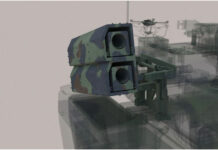Primary batteries, particularly those made from lithium can deliver up to eight times the watt-hour capacity of conventional rechargeable batteries. However, new rechargeable batteries using lithium anode will also have higher capacity than the conventional rechargeable batteries. Although lower than those of the primary sources, they will provide a choice between freedom from charging and longer shelf life of the primary, or the potential cost saving with rechargeable batteries.
Logistics of primary batteries are simple as portable energy can be made available at remote distribution points that are unmanned and have no electricity. Disposal is easy because little toxic material is used. However, because of one-time use, the cost of the primary battery is about 30 times higher than that of rechargeable cells. Primary batteries are also simple to store, as they require no maintenance. Primary battery has a shelf life of 10 years. In contrast, lithium-based batteries are good for 2-3 years only, whether used or not. Cool storage at a 40% charge level prolongs longevity. Nickel-based batteries are good for five years and longer, but require priming to regain performance after long storage.
Stocking of rechargeable batteries require significant maintenance, keeping track of the battery’s state of health, cycle count and age. Due to high self-discharge, nickel-based batteries exhibit a 10-20% self-discharge per month. This compares with 5-10% for lithium and lead-based batteries. Self-discharge increases at higher temperatures. For this reason, secondary batteries are not an effective media for long-term energy storage, and must be fed before each activity. Specific maintenance procedures must be followed with each type of chemistry, operational use and environmental conditions.
Additional Parts of this article :
- Powering the Land Warrior
- Military use of Primary Lithium Batteries
- Rechargeable Power For Military Use
- Logistic Aspects of Military Batteries
- Logistics of Military Rechargeable Battery



















